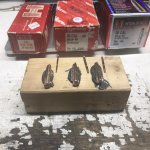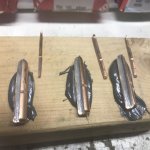- Location
- Saskatchewan
Not exactly on topic, but I just picked up a box of Hornady .308" 220gr. RN Full Metal Jacket bullets. Old school "very big critter getters" or to make small holes in very small game. I have a couple of trips to Africa planned in my near future. Zimbabwe again in March 2023 and perhaps Mozambique later. As a result, my mind sometimes wanders off to epic hunting stories of "long ago and far away". The 30-06 with 220 grain bullets used to be considered more versatile and capable than it is today. If the opportunity presents itself to shoot something not really suited for the .30-06, I'll be ready! Mozambique does not have "legal minimum caliber requirements" in case you're wondering. And yes, I do believe in choosing a cartridge properly adequate for the game. But...
It would be interesting to carry a .30-06 rifle sighted for the Hornady 220 RN while on safari, Use the 220 soft points for most game, and keep a few 220 FMJRN on hand for the really big and really small opportunities. Prepared for Buffalo to Dik-Dik! ;-)
It would be interesting to carry a .30-06 rifle sighted for the Hornady 220 RN while on safari, Use the 220 soft points for most game, and keep a few 220 FMJRN on hand for the really big and really small opportunities. Prepared for Buffalo to Dik-Dik! ;-)















































































